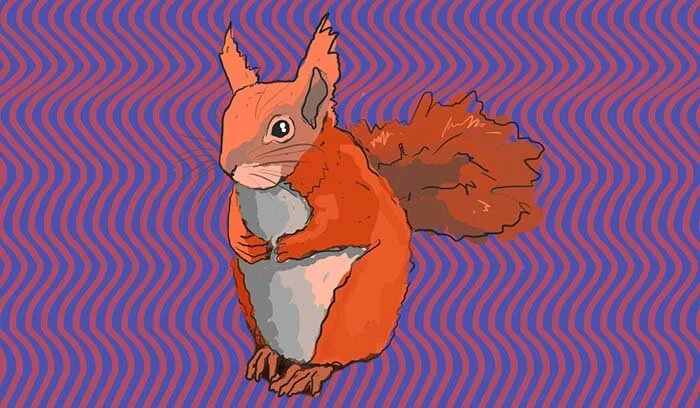Got Stress? Using Music & Virtual Reality To Coax Milk From Cows
For farmers, a happy herd means a greater bounty and a higher paycheck.
By Jessie Schiewe
Maybe this rings a bell: “Great cheese comes from happy cows.”
Unveiled in 2000, the new advertising slogan for the California Milk Advisory Board came out seven years after the iconic “Got Milk?” campaign of the ’90s. The goal of these Happy Cows advertisements was not only to entice people to eat more dairy — but also to purchase products specifically from California.
Backed by a $33 million advertising budget, the campaign was an overwhelming success. The spots took home numerous awards, airing during the 2004 and 2005 Super Bowls and bumping cheese sales to unprecedented heights.
According to the blog Marketing Campaign Case Studies, the key to the advertisements’ success was its sense of humor and fun in conveying the carefree attitudes of California cows, who were portrayed with funny accents and other anthropomorphized traits.
There were those, however, who took umbrage with the Milk Advisory Board’s lighthearted, anthropomorphized ads. After three years of airing the Happy Cows ads on TV and slapping them across bus benches and billboards, the People for the Ethical Treatment of Animals, or PETA, filed a lawsuit against the board, citing false advertising. Dairy cows, they argued, endure lives of pain, disease, suffering, and work — even the ones in California.
"The truth is that there's misery in every glass of milk," Matthew Penzer, a lawyer for PETA, told SF Gate in 2002.
The lawsuit was rejected twice — first by a California Superior Court judge and then once more by a three-judge panel from a California appeals court. Their rulings hinged on the fact that the Unfair Business Practices Act applies only to people, corporations, and associations and not to government agencies, like the California Milk Advisory Board.
Whether the California Milk Advisory Board’s claim that cheese tastes better from happy cows is true or not is a whole discussion unto itself, but the organization wasn’t entirely off-the-mark when they landed on that ad slogan.
Cows have moods and emotional depths more complex than most humans give them credit for. For instance, they can form “best friends.” Separate them, and they’ll both experience anxiety. Loud noises, new environments, and too much commotion are also anxiety-inducing triggers for cows.
Getting milked, it turns out, also leads a cow to feel stress. Things like the manner in which they are milked, be it with a machine or by hand, can play a role in their stress levels. Even the skin temperature of the person who’s milking them can create anxiety for a cow.
When a cow feels stressed, it might act jumpy and uncooperative, or even try to escape. It will also produce less milk.
Stress reduces a cow’s levels of oxytocin, a hormone central to relaxation and milking. This, in turn, can reduce the amount of milk their bodies willingly release.
For farmers who make a living selling the bounties from their herd, this can be a problem. Stressed cows aren’t just an issue from an ethical standpoint; they’re also unprofitable.
How To Help Cows Relieve Stress
Whenever Mehmet Akgül milks his herd, he puts on classical music and blares it through speakers. From symphonies to sonatas, the Turkish cattle breeder originally decided to play the tunes as an experiment — not on himself, but on his cows.
“If this music provides relaxation on humans, so I thought that why wouldn’t it work on animals?” Akgül told the Turkish newspaper Hürriyet in October 2019.
His theory proved correct.
Like numerous farmers before him, Akgül unwittingly discovered one of the most simple and low-cost ways to increase milk production in a herd. Playing music makes cows relax. And the more calm a cow is, the more milk they’ll give up.
Read: “Using Classical Music to Fight Crime”
For Akgül, since he began experimenting with this stress relief tactic on his cows, their milk output has grown by 5%. His herd’s overall health problems, he’s noticed, have also decreased.
Music has a similar effect on humans. Tunes can be calming, and can also help with pain reduction, improved memory function, and better performances on tests.
Not all genres, however, produce the same results. Songs without lyrics are usually credited as being the most soothing, but even within that realm there can be varying degrees of success. For instance, even though Mozart and Philip Glass are both composers, a study by the University of California, Irvine found that music by the former was more effective at improving one’s focusing and spatial reasoning when compared to the latter.
For farmers, choosing the correct music to play for their cows is vital to their longevity as milk producers. Knowing that classical music can help is a start, but are there other kinds of music that can also produce similar results?
In 2001, researchers at the University of Leicester School of Psychology in England embarked on a study to answer this question and find out which genres placate or perturb cows the most. Using a sample herd of 1,000 cattle, the team played selections of fast songs, slow songs, and no music at all to see which had the greatest effect on milk production.
Their results revealed that when slow music was played, the cows had the highest yield, producing approximately 3% more milk than when they listened to fast music or no music at all.
The Leicester study also identified specific songs that the cows either jived with or didn’t. Jams like “Everybody Hurts” by R.E.M., “Bridge Over Troubled Water” by Simon & Garfunkel, and “What A Difference A Day Makes” by Aretha Franklin were top on the list of songs that effectively helped cows reduce their stress levels and thus produce more milk.
House and techno music, meanwhile, went over less-well with the cows, with classic club hits, like Mousse T’s “Horny ‘98,” failing to produce positive milking results. Other songs that did not improve milk yields included Mud’s 1975 glam rock single “Tiger Feet” and 90’s alt-rock band The Wonder Stuff’s first Top-10 hit, “Size of a Cow.”
Cows, clearly, are picky about the kinds of music that goes into their ears. (They’re also apparently fans of Shakespearean plays.)
But it’s not the lyrics or the lead singer’s tonal pitch that determines whether or not a cow will like a song: it’s the pace.
Unlike an aerobics instructor keen on finding the fastest, adrenaline pumping music for their classes, cows are drawn to the opposite, preferring music with fewer beats per minute overall. Genres like house, techno, rock, and pop are simply too chaotic and cluttered to help them reduce their stress.
A cappella singing has also been shown to be useful in helping cows chill out and calm down. This includes bellowed opera arias, as one Italian veterinarian demonstrated in a viral video from July 2019, or sung lullabies, a practice that has been observed amongst herders in rural Mongolia.
For centuries in Sweden, singing has also been used to lure cattle home from across great distances. Traditionally performed by women, these so-called “kulnings,” or ancient herding calls, are high-pitched and almost otherworldly-sounding, but they do the trick.
One of the newest techniques for increasing milk production is the use of virtual reality (or VR) headsets on cows in Russia. According to VICE, the new program, by the Ministry of Agriculture and Food of the Moscow Region, operates pretty much exactly as it sounds.
Virtual reality headsets, designed specifically for the animals in regards to their shape, size, and color palettes, are placed on the cows’ heads, over their eyes. They reportedly project scenes of “a calm summer field.”
By transporting cows to peaceful places, farmers are hoping they’ve found yet another means of tricking their herds into producing more milk.
The new tactic will likely prove successful, but it’s also a lot more expensive and labor intensive than simply streaming Barry Manilow music videos and other slow jams on YouTube — for free.
























